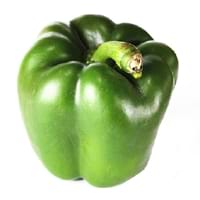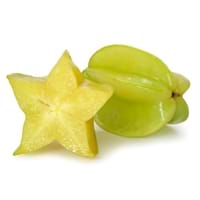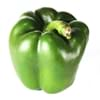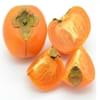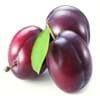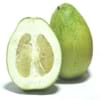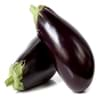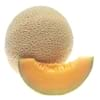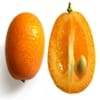Health Benefits
Arthritis treatment, Cancer prevention, Heart care
Cancer prevention, Heat stroke treatment
General Benefits
Anti oxidant properties, Anti-inflammatory properties, Controls blood pressure, Digestive aid, Eye care, Helps in weight loss, Maintains healthy cholesterol level, Strengthens bones
Anti oxidant properties, Anti-inflammatory properties, Digestive aid, Maintains healthy cholesterol level, Treatment of sore eyes
Skin Benefits
Anti-aging benefits, Treatment of skin diseases
Anti-aging benefits, Heals sunburn, Skin rejuvenation
Hair Benefits
Prevents hair loss, Promotes longer and healthier hair, Regulates hair growth
Promotes longer and healthier hair, Protects hair
Allergy Symptoms
Abdominal pains, Coughing, Eczema, Headaches, Hives, Redness of eyes, Sneezing, Swelling, Swelling of mouth, tongue or lips, Watery eyes, Wheezing
NA
Side Effects
Allergic reaction, Mouth irritation, Throat irritation
Nausea, Vomiting
Best Time to Eat
Along with meal, Don't consume at night and before bed, Don't eat after meal, Morning time (before lunch)
As a snack in the late afternoon, Eat the fresh ones, avoid mixing with any other foods, don't eat after meal., Strictly avoid empty stomach
Vitamin B5 (Pantothenic Acid)
Vitamin C (Ascorbic Acid)
Vitamin K (Phyllochinone)
Phytosterol
Not Available
Calories in Fresh Fruit with Peel
Calories in Fresh Fruit without Peel
Not Available
Not Available
Calories in Frozen Form
Not Available
Calories in Canned Form
Not Available
Not Available
Type
Fruit vegetable
Tree fruit
Season
All seasons
Autumn, Spring, Summer
Varieties
Big Bertha, Yolo Wonder, Yankee and Fat n Sassy
King, Bell, Sri Kembangan, Arkin and Fwang Tung
Color
Green
Golden yellow, Green
Inside Color
Light Green
Yellowish Green
Shape
Irregularly oval
Oval and Star(Cross section)
Taste
NA
Crisp, Juicy, Sweet
Origin
Central America, Mexico, South America
Sri Lanka
Grows on
Bushes
Not Available
Soil Type
Loam
Loam, Well-drained
Climatic Conditions
Warm
Moist, Warm to hot climate
Facts about
- Colored bell peppers are sweeter as compared to green bell pepper.
- The inner white colored cavity is rich source of flavonoids and is edible.
- Red bell peppers have more nutrients as compared to green bell peppers.
- When carambola is cut horizontally, it forms a star.
- It is believed that carambola helps to cure hangover.
- Entire carambola is edible, including its skin.
- 2 varieties of carambola are cultivated: tart & sweet.
Top Producer
China
Taiwan
Other Countries
Egypt, Indonesia, Israel, Korea, Mexico, Netherlands, Nigeria, Romania, Spain, Turkey
Australia, Guyana, India, Israel, Malaysia, Philippines, United States of America
Top Importer
United States of America
Europe
Top Exporter
Canada
Malaysia
Botanical Name
Capsicum annuum
Averrhoa carambola
Synonym
Not Available
Not Available
Subkingdom
Tracheobionta
Tracheobionta
Division
Magnoliophyta
Magnoliophyta
Class
Magnoliopsida
Magnoliopsida
Subclass
Alismidae
Rosidae
Order
Solanales
Oxalidales
Family
Solanaceae
Oxalidaceae
Species
C. annum
A. carambola
Generic Group
Not Available
Not Available
Difference Between Green Bell Pepper and Carambola
We might think that Green Bell Pepper and Carambola are similar with respect to nutritional value and health benefits. But the nutrient content of both fruits is different. Green Bell Pepper and Carambola Facts such as their taste, shape, color, and size are also distinct. The difference between Green Bell Pepper and Carambola is explained here.
The amount of calories in 100 gm of fresh Green Bell Pepper and Carambola with peel is 20.00 kcal and 31.00 kcal and the amount of calories without peel is Not Available and Not Available respectively. Thus, Green Bell Pepper and Carambola belong to and category.These fruits might or might not differ with respect to their scientific classification. The order of Green Bell Pepper and Carambola is Solanales and Oxalidales respectively. Green Bell Pepper belongs to Solanaceae family and Carambola belongs to Oxalidaceae family. Green Bell Pepper belongs to Capsicum genus of C. annum species and Carambola belongs to Averrhoa genus of A. carambola species. Beings plants, both fruits belong to Plantae Kingdom.
